A new mom is under so much pressure, including the pressure that is inflicted upon her by swollen breasts that are constantly begging to feed her young.
The last thing she needs is mastitis.
This condition leads to an unplanned foray into the world of large breasts.
While going up a cup size or two isn’t a bad wish for some women, mastitis does it with painful swelling that can be the result of infection.
For breastfeeding moms that are already dealing with larger-than-usual breasts and nipple soreness from baby’s repeated suckling,
this is one more postpartum headache that adds to her reasons for wanting to lock herself in a closet with a box of snack cakes and a bottle of wine.
While snacking with a buzz doesn’t sound like a bad idea
it’s imperative for moms to know how to dry up milk supply without getting mastitis once the baby no longer needs to breastfeed.
Reasons to Dry Up the Milk Supply and Ending Breastfeeding
If the baby is still breastfeeding but at such a low frequency that the milk supply keeps building up faster than it is spent, it’s most likely time to “get the little away from the nipple.”
This can be a difficult decision because feeding time is bonding time
but it is one that can save your breasts from the discomfort and danger of mastitis.
Nonetheless, decreased demand will eventually lead to a reduction in supply
but a mom needs to protect herself from the throes of mastitis sooner rather than later.
Consider this:
One of the most painful things a mom with mastitis deals with is when her little one wants a hug or pounces with no warning and smashes the sore, swollen breast.
A little person doesn’t understand why mom is screaming like a teenager being cornered by the masked serial killer in a horror movie after she ran up the stairs to getaway.
And hopefully, babies don’t make that analogy in their little minds or some television habits might have to be reviewed.
Nevertheless, the pain is excruciating and the possible infection can become life-threatening.
That is why you want to dry up the milk supply as soon as possible in a safe manner when feeding significantly reduces or stops.
What Is Mastitis?
To clarify exactly what mastitis is, it’s when the breast tissue becomes inflamed.
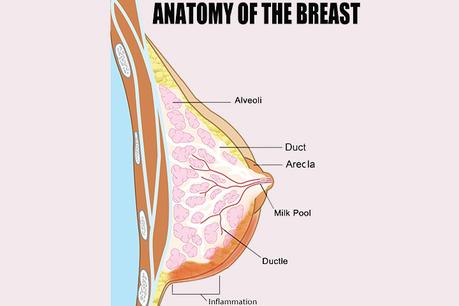
Unfortunately, an infection is sometimes involved.
The other symptoms include:
- Redness that presents in a wedge pattern
- Pain
- Fever and chills
- A breast lump or thickening of breast tissue
- The feeling of being ill
- A burning sensation while breastfeeding
- Tenderness and warmth to the touch
When mastitis occurs during breastfeeding, it is called “lactation mastitis.”
However, it can happen in women that aren’t breastfeeding, especially if their milk supply didn’t dry up.
If you do get mastitis while breastfeeding, it can be better for mom to continue to breastfeed, even while on an antibiotic, to try and clear up the condition.
This can be painful, resulting in more tears running down mom’s face than baby’s
but the goal is to eliminate the condition and then dry up the milk supply to prevent it from happening again.
The causes include:
A blocked duct – If the breast isn’t emptied while feeding the baby, a milk duct can become clogged.
The milk backs up, which can cause an infection.
Bacteria sneaks into the breast – Bad bacteria isn’t welcome anywhere, particularly the breast.
Unfortunately, it can roll out the proverbial welcome mat for itself and come right on in from the surface of the skin or a crack in the nipple.
Breastfeeding moms know all about cracked nipples but don’t think about how those cracks are like doors for unwanted things.
If the milk isn’t emptied from the breast, bacteria can settle in and breed.
If a mom has had mastitis before, she is at risk for it again.
This is another reason to dry milk up quickly and safely.
Even wearing bras or seat belts that are too tight can prohibit the flow of milk in an actively breastfeeding mom and cause it to become stagnant.
Again, milk that doesn’t move is where bacteria can breed.
Add in the fact that new moms become stressed and tired and might suffer nutritionally and you have a recipe for disaster.
Improper nursing technique and smoking also increase the risk of mastitis.
If it isn’t prevented, an abscess can form in the breast and that can require surgery because abscesses are serious and life-threatening.
If there is no severe abscess, the usual treatment is a pain reliever and a 10-day course of antibiotics.
Finishing the entire course of antibiotics is important so mastitis doesn’t come back.
How to Dry Up Milk Supply without Getting Mastitis?
To reduce the chances of developing mastitis while breastfeeding, it’s important to make sure milk drains from the breast.
It’s about establishing a good feeding routine from the start
such as making sure the baby is latching properly and making sure one breast is emptied before switching to the other.
Even changing the feeding position can be beneficial.
Doing these things can set you up for successfully drying up your milk later.
When it’s time to stop breastfeeding, you can gradually wean the baby.
If there isn’t an urgency to immediately dry up the milk supply, a gradual cessation is best for everyone.
You can drop one feeding session each week and replace each dropped feeding with a bottle.
You want to stop nighttime feedings last since babies tend to be more attached to their moms in the evenings.
While this might relinquish all hope you have of not having to wake up in the middle of the night to nurse (usually replaced by bottle feedings), you’ll be spared a lot of grief from your little person.
The reduction in feedings will reprogram the breasts to produce less milk.
This is also a good time to “check the tatas” for changes.
If they become more sore than usual, start getting red, or swell, talk to your doctor immediately because these are signs of mastitis.
You can also consider birth control to stop milk production since it is a hormonally-driven bodily function.
Even decongestants have shown to speed up the process.
Decongestants aren’t recommended for breastfeeding women because they can dry up breastmilk.
When that’s what you want to do, all it takes is a visit to the local pharmacy to start the process.
How to Dry Up Milk Supply Cold Turkey?
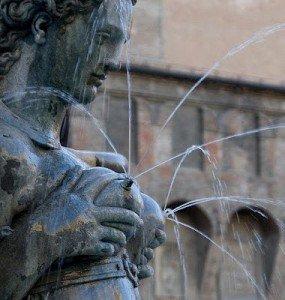
If the milk supply needs to be dried up quickly, it is safe to stop breastfeeding.
This can be an uncomfortable situation since your milk supply is like a warehouse that is stocked and restocked based on supply and demand.
If you stop breastfeeding, the body will make less and less milk.
However, hormones have to stabilize and that means the breasts will become full and heavy for at least a few days.
This is the time to invest in breast pads that can absorb milk that leaks from the breast.
Breast pads help to avoid embarrassing social situations, so it’s a good idea to carry the pads in your purse and replace them when they’re wet.
Product Image Satisfaction Rate
Lansinoh Breast Pads
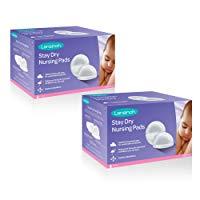
KeaBabies Breast Pads
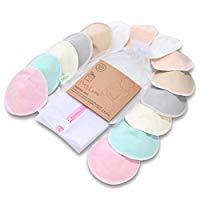
Bamboobies Breast Pads
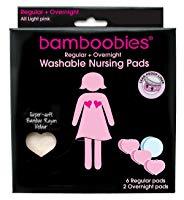
Another way to relieve the pressure is to use a pump to remove just enough milk to take off the edge.
This can produce some of the same effects as weaning the baby and is somewhat safer when preventing mastitis.
In the meantime, it doesn’t hurt to show off a little cleavage if you like the added volume you have during this time.
Then again, drying up milk supply cold turkey doesn’t feel too sexy for everyone, so throwing in a decongestant might speed up the process a little.
How to Dry Up Milk Supply with Cabbage?
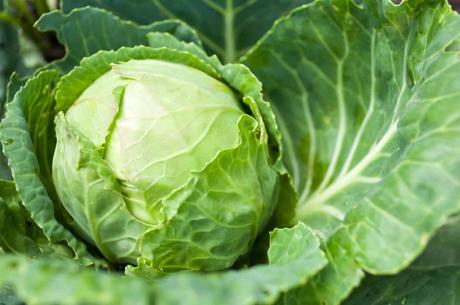
For moms that are into natural remedies, raw cabbage leaves work miracles.
There are enzymes within the leaves that tell the breasts to cut it out with the milk production.
Placing cold leaves in your bra helps and even feels nice.
Sure, you might smell a little earthy, especially if the leaves aren’t changed out every few hours
but this is a cheap remedy that gives you a good reason to do some shopping from your local grocer’s produce department.
How Long Before the Milk Goes Away?
How long it takes for milk supply to dry up depends on the method used and the woman.
Women that stop breastfeeding cold turkey will dry up within a matter of days to a week.
Moms that wean the baby will dry up in several weeks to a month.
It’s not a bad idea to try the cabbage or decongestant method to speed up the process by a few days.
How to dry up milk supply without getting mastitis means doing it in a way that prevents clogs from forming.
Other things that moms can try to include breast binding, wearing sports bras, and taking ibuprofen to help engorgement pain.
Just make sure you don’t wear tight-fitting bras or bandages while actively breastfeeding or you could accelerate your breasts into a painful case of mastitis.
What are the Signs of Milk Drying Up?
To know that your milk is drying up, look for a reduction in supply.
If you are using breast pads and they aren’t getting wet, that can be a sign.
Some women describe an “empty” feeling.
Any engorgement that occurs after stopping breastfeeding will go away.
You might even notice your breasts shrinking because the ducts are no longer producing and filling with milk.
How Can I prevent Clogged Ducts in the Future?
In the future, you can prevent clogged ducts by making sure the baby is latching properly and changing position from feeding-to-feeding.
Also, pay special attention to your breasts and how they feel.
While it can be hard for a mom to find time to shower, especially alone, it’s a good time to check for sore or hard spots.
If you find an area that hurts, massage it toward the nipple.
You can even heat up the breast with a warm compress before nursing, increasing the chances that nursing will relieve a clog that is starting to happen.
Changing the baby’s jaw position from feeding-to-feeding will also ensure that maximum suction is happening at different angles.
In the meantime, avoid wearing anything tight that can restrict the flow of milk.
Wear the right size bra with no underwires, pump hourly between feedings, use cold packs after nursing to reduce swelling, and look for milk blisters on nipple pores that could be blocking flow.
If you find a milk blister, apply moist heat before nursing, use a hospital-grade pump, pull out the plug if it is protruding from the nipple, and use an ointment that treats this issue.
What are the Side Effects of Stopping Breastfeeding?
The exact side effects depend on how fast you stop.
It’s common to have some engorgement when breastfeeding first stops.
This means breast size will increase, which means you might have to temporarily wear a larger bra since your bra needs to fit properly.
Just don’t forget to insert breast pads so leakage doesn’t show through your clothes.
You can bind your breasts during this time, which helps with any pain.
Even when you wean your child, there might be some engorgement.
However, you can use a pump to take out some milk for relief.
This can help reduce the mastitis risk that comes with cold turkey milk drying.
It’s like training your body to produce less until it stops.
In Conclusion: To Wean or Not to Wean
In the end, how to dry up milk supply without getting mastitis lands on the question of whether to wean or not to wean.
Weaning means drying up breast milk gradually, which reduces the chances of mastitis.
Not weaning means drying it up faster and increasing the risk of mastitis.
Nonetheless, the measures discussed on this page can help prevent mastitis while putting a stop to milk production.
It comes down to preventing the clogged ducts that later lead to the painful swelling and potential infection that makes mastitis such an uncomfortable and dangerous condition.
Additional information:
- Getting Baby To Take Bottle
- When Do You Change Nipple Flow On Bottles?
- What to do about clogged milk ducts
- Cabbage Leaves for Breast Engorgement and Weaning
- Effect of chilled cabbage leaves vs. hot compression on breast engorgement among postnatal mothers admitted in a tertiary care hospital
- What is Ibuprofen
Photos credits: Amazon, Mom Junction, Breastfeeding Basics.
